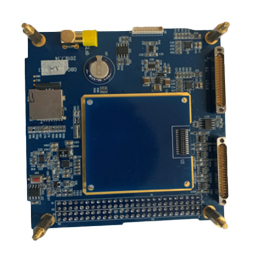The rapid advancement in satellite technology has brought about the development of CubeSats, small but powerful satellites designed for various space missions. Central to the success of these miniaturized satellites is the Cubesat Spaceborne Computer, an essential component that ensures efficient data processing and mission control. This article explores the significance, functionality, and future prospects of the Cubesat Spaceborne Computer.

Understanding Cubesat Spaceborne Computer
A Cubesat Spaceborne Computer is a compact, robust computer system specifically designed for CubeSats. Unlike traditional satellite computers, these systems are engineered to withstand the harsh conditions of space while providing reliable performance. The primary role of a Cubesat Spaceborne Computer is to manage the satellite’s operations, process data collected from sensors and instruments, and communicate with ground stations.
Key Features and Advantages
The Cubesat Spaceborne Computer is distinguished by several key features that make it ideal for small satellite missions:
- Compact Size and Weight: CubeSats are designed to be small, typically measuring 10x10x10 cm. The spaceborne computer must fit within these dimensions while maintaining functionality.
- Radiation Hardening: Space is a high-radiation environment that can damage electronic components. The Cubesat Spaceborne Computer is built to be radiation-resistant, ensuring long-term operation without degradation.
- Power Efficiency: CubeSats have limited power resources. The computer is designed to consume minimal power while maximizing performance, balancing power efficiency and computational capability.
- High Reliability: Space missions demand high reliability. The Cubesat Spaceborne Computer uses fault-tolerant architecture and redundancy to ensure continuous operation even in the face of hardware failures.
Applications of Cubesat Spaceborne Computer
The Cubesat Spaceborne Computer is versatile and can be used in a wide range of applications:
- Earth Observation: Processing high-resolution images and data from Earth’s surface for environmental monitoring, disaster management, and urban planning.
- Scientific Research: Conducting experiments in microgravity, studying space weather, and observing astronomical phenomena.
- Communication: Enhancing satellite communication networks, including data relay and Internet of Things (IoT) applications.
- Technology Demonstration: Testing new technologies and components in the space environment before deploying them in larger, more expensive missions.
Future Prospects
The future of the Cubesat Spaceborne Computer looks promising, with ongoing advancements aimed at increasing computational power, enhancing artificial intelligence capabilities, and improving energy efficiency. As the demand for small satellites grows, the development of more sophisticated spaceborne computers will enable more complex and ambitious missions.
Innovations Driving the Future
Several innovations are expected to drive the evolution of the Cubesat Spaceborne Computer:
- Artificial Intelligence (AI): Integrating AI algorithms for onboard data processing and decision-making, reducing the need for constant communication with ground stations.
- Quantum Computing: Exploring the potential of quantum computing for enhanced data processing capabilities, potentially revolutionizing satellite technology.
- Advanced Materials: Using new materials to improve radiation resistance and thermal management, further enhancing the durability of spaceborne computers.
In conclusion, the Cubesat Spaceborne Computer is a critical component that underpins the functionality and success of CubeSat missions. Its compact size, power efficiency, and reliability make it an indispensable element in the rapidly evolving field of small satellite technology. As advancements continue, the Cubesat Spaceborne Computer will play a pivotal role in shaping the future of space exploration and satellite applications.
